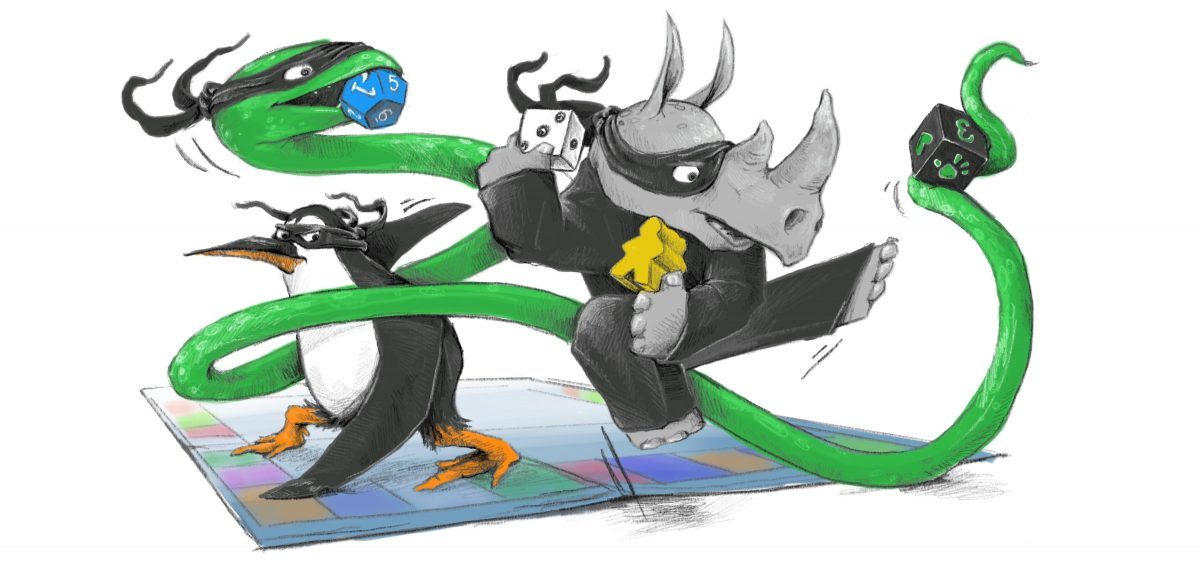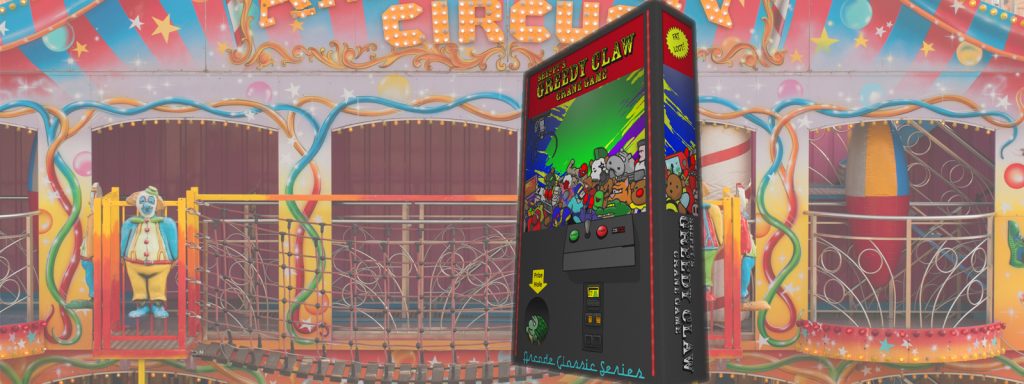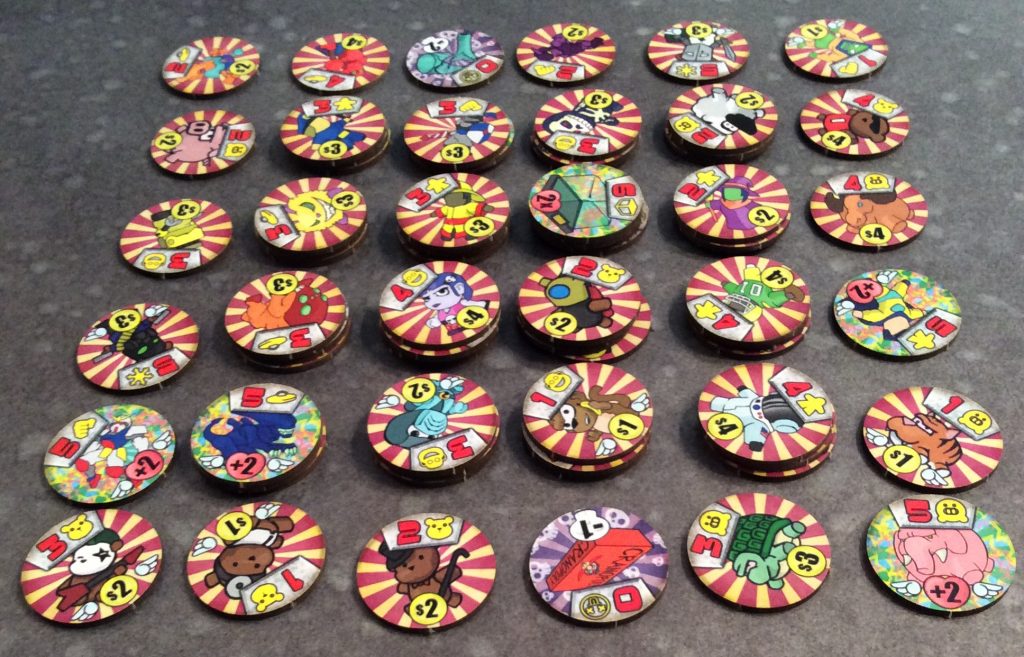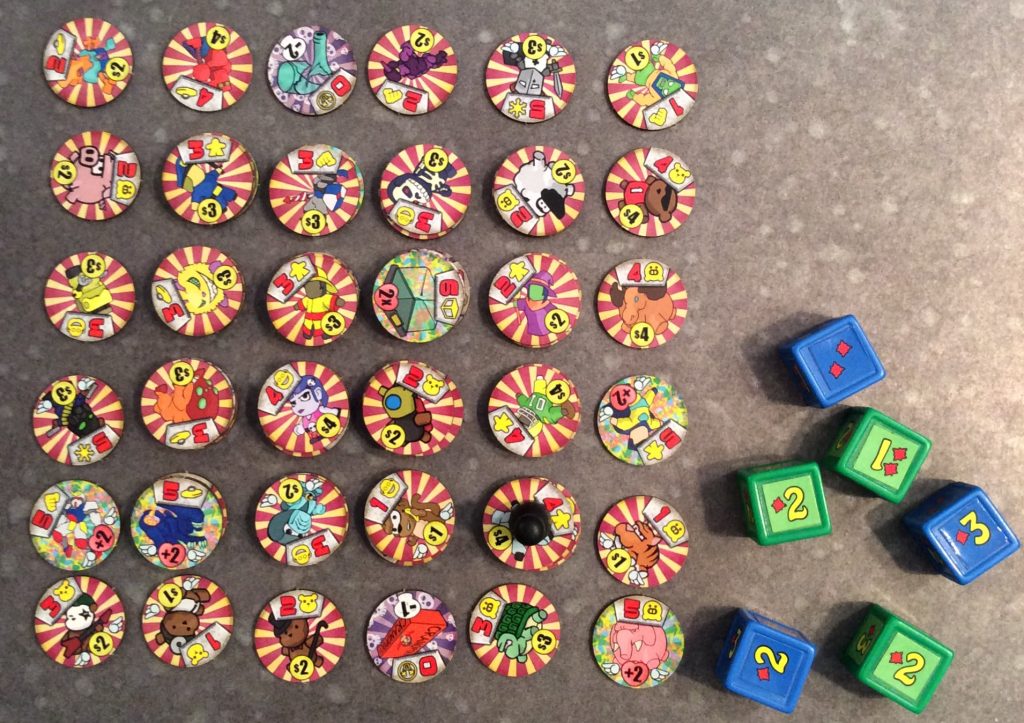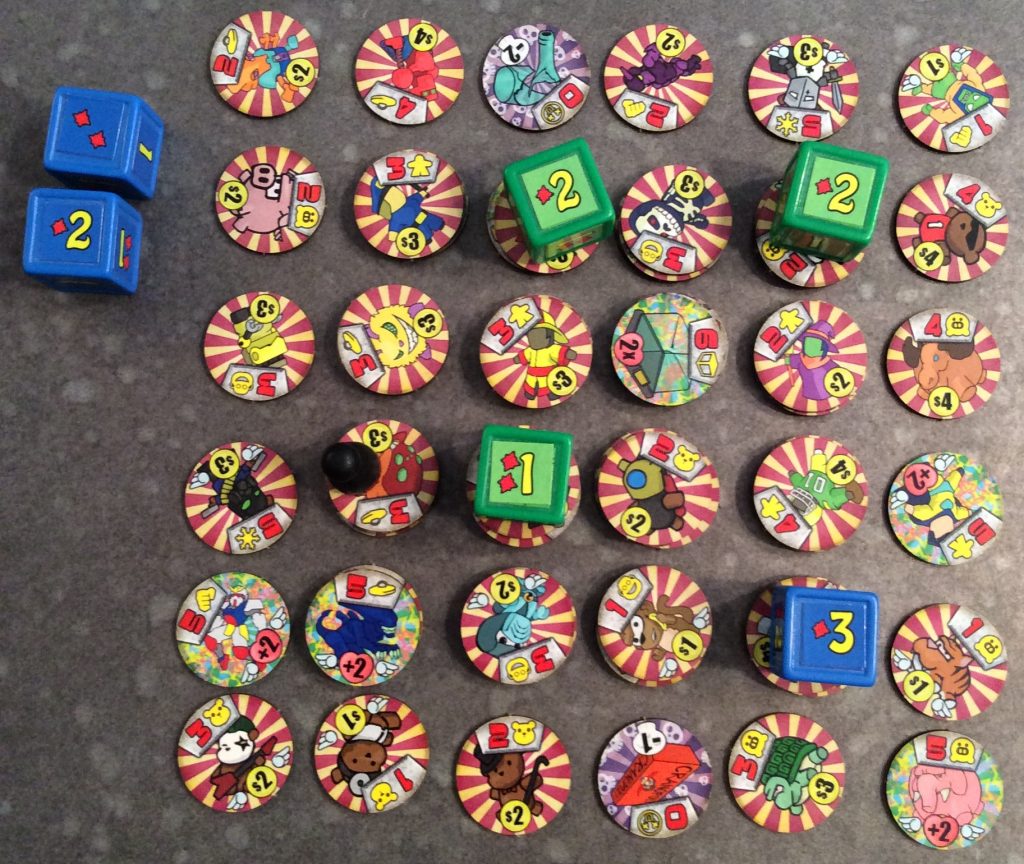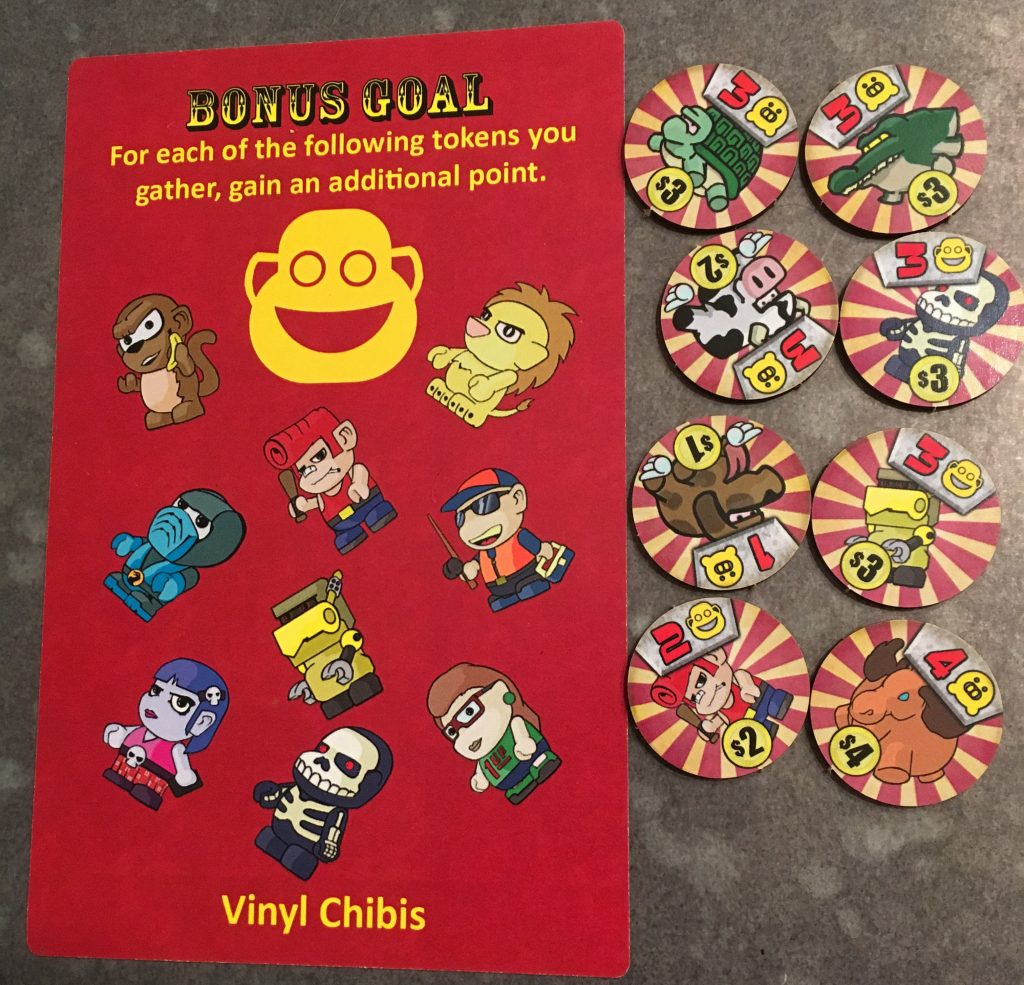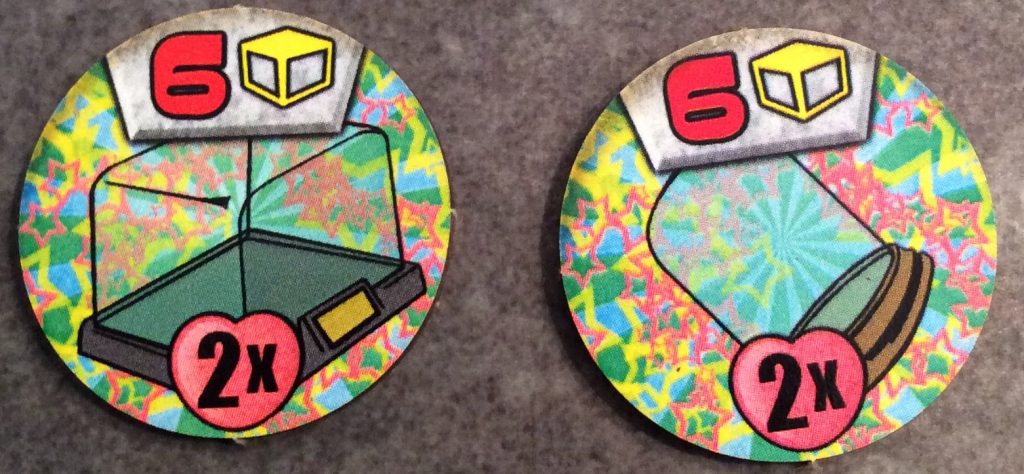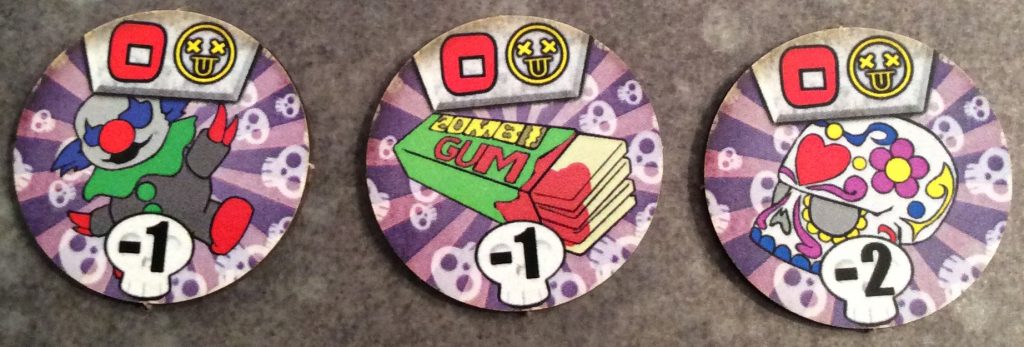There are times when you want to play a really long, intricate game. One that takes hours. One that is so complicated that you and your friends argue over the rules.
This is not that game. Take a Yahtzee mechanic, add some simple strategy and throw in some adorable toys and you get Greedy Claw: a light, fast game that you can play almost anywhere.
We were able to get hold of a preview copy of this game, so let’s take a look:
The Basics:
Basically in this game you are attempting to get toys from one of those crane machines – you know, the ones you see at Walmart and Chuck E. Cheese. Each turn, you pick a starting location, roll the dice, and attempt to grip the toy in the spot you end up in. Each toy has a different value and belongs to one of six different sets. The game ends when someone collects a certain amount of points (the values on the tokens), which is different depending on the number of players. Afterwards, you add in your bonuses for set-collection and bonus cards, and whoever has the highest score wins.
So how does it play?
First off, this game is really simple to learn. If you ever played a dice-chucking game of any kind, you should be right at home. If you haven’t, this is as good as any to get you started. There is a grid of toys laid out face-up representing the toys in a claw machine.
The toys in the center areas are stacked, representing a mound of toys and providing for the toys on the top levels to sometimes fall down into the spaces created by removing toys.
The mechanics have been well thought-out to give the effect that you are actually playing one of those machines. Remember how it was always frustrating that the machine would only let you move the claw over and then back? This game accurately simulates that action by not allowing your movement to cross its own path.
The gameplay is played by rolling 6 dice that control both where the claw will move and how strong its grip will be when it attempts to grab the toy.
By using them correctly, you can send the claw exactly where you want it to go (within reason) and secure the toy you want. That’s the simple version. (Note: the dice shown here are prototypes and the different colors no longer matter in the game).
In reality, there is quite a bit more strategy involved. As toys start being collected, other toys are revealed and your choices change basically every turn. Luckily there are plenty of toys in this claw machine and you will not run out of opportunities.
On your turn you will roll the dice, determining which dice to use and which ones to re-roll (a la Yahtzee). You must use at least 2 of the dice you rolled each time. For example: if you used 4 dice after your first roll, then re-rolled 2, you would have to use those 2 the next time and wouldn’t get a third re-roll.
The black token representing the claw starts each turn where the previous player stopped it. So after rolling your dice, you will look around the grid and determine which toys are within reach and which dice you need to re-roll.
Any dice that are going to be used for grip are set to the side of the grid and are considered used (cannot be re-rolled this round). Any dice that are used for movement are placed in a path of movement to help you keep up with where you have moved this round. This prevents you from crossing your own path (which is not allowed).
So, on any given turn you might choose to use 2 die for movement and 1 for grip, then re-roll, use 2 for movement and 1 for grip, then re-roll and use the last die for movement. Or something similar. If after using all your movement (which you must), you have enough grip power to collect the toy, you do so and place it in your player area.
In the above example we moved up 3, then left 2, then down 2, then over 1. We had just enough grip to grab the toy whose grip value was 3. We didn’t have to re-roll any of the dice to get the toy that we wanted, but we could have if necessary.
If collecting the toy would cause there to be an empty spot in the grid, the toys cascade from above to fill the gap, making sure that you will always have a path to a toy next turn.
The set-collecting aspect adds bonus points for each toy of a specific set you obtain during the game. Each player will have a hidden goal (represented below by the card, but being replaced very soon by a disc slightly larger than the toy tokens – much more manageable and easier to keep hidden). This card will list one of the sets of toys. You will score an additional point for each of the toys you collect that belong to the set listed on your hidden goal token.
This adds some thought to the game, because you are trying to collect very specific toys. If you collect too many of the wrong toys, the game will end before you are ready, and you will not have achieved the score you desired.
The bonus tokens work in a similar fashion, giving you 2 bonus points for every toy of that type you collect, although this will not be hidden.
These tokens allow you to get additional points for toys outside the set listed on your hidden goal token.
There are also collector’s cases that add a 2x multiplier to any one toy.
Both of these bonuses prevent someone from just ending the game quickly before anyone can really get going (since they themselves don’t add to a player’s score until after the game has ended, but require a turn to collect).
Sometimes it is more advantageous to have collected bonus tokens instead of just going for set-collection.
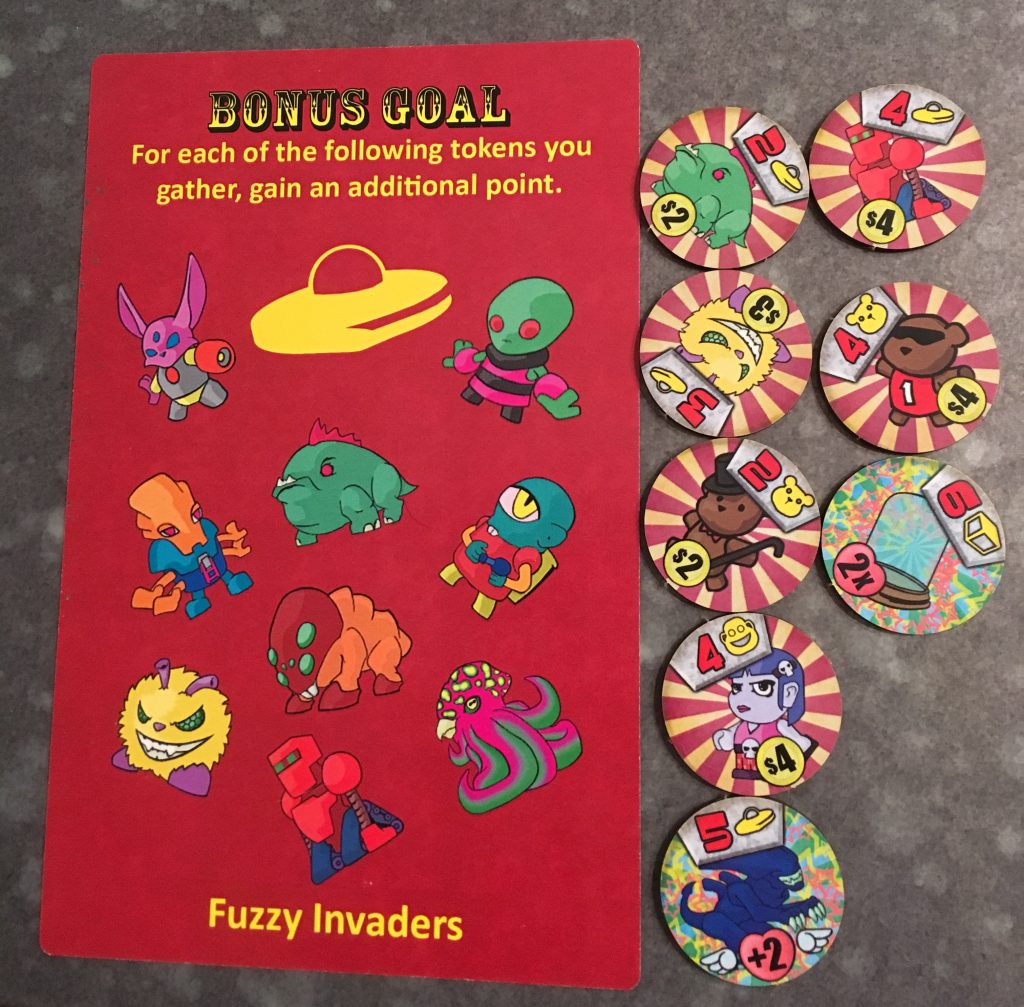 In this example, this player scores 32 points by varying their strategy, beating the player above who scores only 29 points by going the straight set-collection route.
In this example, this player scores 32 points by varying their strategy, beating the player above who scores only 29 points by going the straight set-collection route.
The game often ends very quickly (seven or eight rounds), but that is not necessarily a bad thing.
There is also an ability built into the game called “Winging It”. Some of the toy tokens will have a tiny pair of white wings on the value circle (like on the Bonus tokens above). If you manage to secure one of these toys, you can press your luck to try to collect an additional toy. To do this, you re-roll any dice used only for movement and basically start your turn over with fewer dice. If you manage to collect an additional toy after choosing to Wing It, you secure both. If you fail to collect an additional toy, you lose both. You can also chain this effect (the most I have ever managed is 3 in one turn).
This feature allows for a player to catch up to an opponent who may be running away with the game. Even if the end game has been triggered and you are considerably behind, you still have hope if you manage to Wing It several times on your last turn.
Thoughts?
Greedy Claw is quick, silly, and simple, but has the potential to be very competitive. It’s light enough to play as a filler and small enough to go in a purse or coat pocket. All you need is a table or flat play area. I think this game has a lot of potential to fit well into the light strategy/filler category.
The toy tokens themselves are very cute and colorful, just as you would expect in a claw machine. We were sent a preview copy (with 2 additional updates), so these components are not likely to be final, but they keep getting better so that’s alright. And they already look pretty good. We already know that the big cards are being replaced by discs slightly larger than the toy tokens, which will act as hidden goals and will be much easier to keep hidden.
One of the major improvements we have already seen is with the cascading toys. Before, there could be open spaces which made the grid hard to navigate. The designers also added broken or “bad” toys that provide negative points, which I think adds to the theme and the gameplay, since you are forced to take toys if you can.
Overall, I think it stands pretty well on its own and I’ll be following along to see how far it can go, since the designer has planned for possible new artwork and stretch goals. But the game mechanics are set, and work really well.
All in all, a solid little game.
Greedy Claw is coming to Kickstarter soon. We were sent a preview copy in exchange for providing an honest review, which is exactly what we did.
